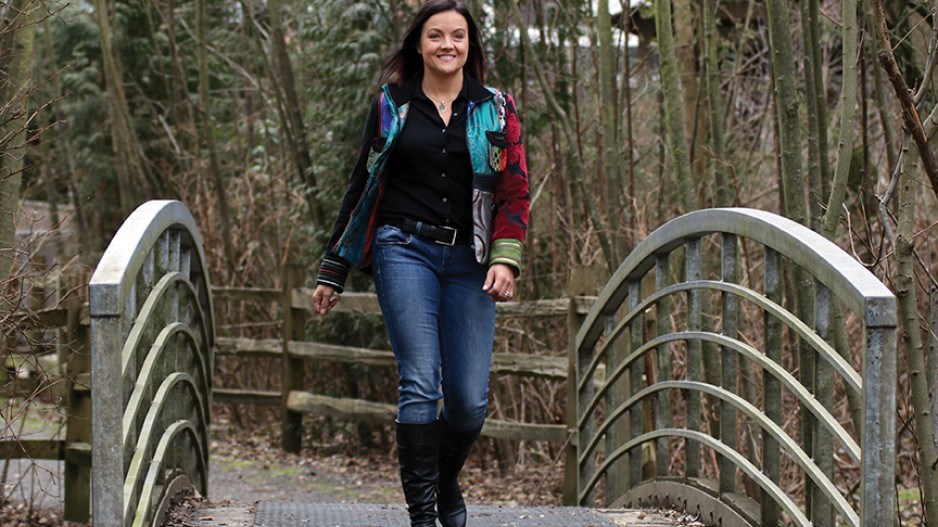A new Statistics Canada study suggests that by 2036, nearly one in two Canadians will be an immigrant or the child of an immigrant. As outlined in Immigration and Diversity: Population Projections for Canada and its Regions, Canada’s immigration population could rise to 30% by 2036, compared with 20.7% as of 2011. In the Lower Mainland, immigrants could represent as much as 48.5% of the population in under two decades.
While the number of immigrants to B.C. has been slowing since the 1990s, Surrey has picked up much of the slack. Its immigrant population increased 63.7% between 2001 and 2011; the Lower Mainland’s average was 23.7% during the same period.
The city has consequently become ground zero for immigrant integration into the workforce, said Mandie La Montagne, a human resources strategist and partner for the Surrey-based Intueri Group.
La Montagne, recently nominated for a Surrey Women in Business Award, said immigrant integration across the Fraser River is confusing and complicated.
“It’s like a Wild West of intercultural communication in the workplace,” she said. “There’s lots going on and lots to be explored.”
La Montagne said “intercultural communication” has become a buzzword in Surrey lately, as businesses in the fast-growing city struggle to integrate employees who were born abroad. She said it has become increasingly challenging as the incentive to integrate for some immigrants has fallen off sharply as the city fills out with enclaves of foreigners.
“When someone comes from the Punjab looking for work, usually they’re settling into the Indian population in Surrey now,” she said. “I have a lot of conversations with [Surrey employers] now who say, ‘I don’t want to hire anyone who can’t speak my language and who doesn’t know how we do things in Canada.’”
Surrey’s overall immigrant population sits at 40.5%, and about 30% of Surrey’s immigrants speak Punjabi as their native tongue, according to the Surrey Local Immigration Partnership. According to Statistics Canada, the region’s immigrant population is going to get bigger. By 2036, first- and second-generation immigrants could make up as much as 70% of the Lower Mainland’s population, with more than half coming from Asian countries such as India and China. This means about one-third of the working-age population would belong to a visible minority, and a quarter would not speak English as their native tongue.
La Montagne acknowledged that the influx of newcomers, coupled with a lack of consistency in integration methods offered by the local government and non-profits, has created some “silo communities” within the city. She said this has meant that, for some immigrants – including some newcomers to the city’s Indo--Canadian population, though not just that community – moving to Canada doesn’t require learning a lot of new skills.
“They’re working for an Indian employer, and they’re communicating in their familiar language,” she said. “But what happens when they have to apply for a job with someone else outside of that community with a language that is different?”
Diversecity, a Surrey-based non-profit immigrant employment agency, is launching a program called Soft Skills Training for Newcomers. The course will be taught by Alden Habacon, who works as a senior adviser in the field of intercultural understanding for the University of British Columbia. Habacon said some immigrants are under the assumption they will be able to get a job on technical skills alone, and are unaware that personality and communications skills figure importantly in the selection process.
“When employers say they’re looking for Canadian experience, what they really mean is that they are looking for evidence that a candidate has the ability to communicate, negotiate and lead effectively and appropriately in a Canadian context, which is entirely cultural specific,” Habacon said.
Susan Liu Woronko, manager of skills training and employment for Diversecity, said the Soft Skills Training for Newcomers program is aimed at tackling multiple issues arising from the integration of immigrants into the workforce.
The program, for instance, teaches immigrants to not speak in their native language during professional settings, and warns against giving expensive gifts to the boss because it could be perceived as bribery.
Other issues reported by employers include “a tendency to pass blame,” Liu Woronko said, adding that new arrivals often demonstrate a “lack of willingness to admit mistakes, perceive critical feedback as a personal attack or institutional racism” and often pretend to understand instead of asking for clarification.




